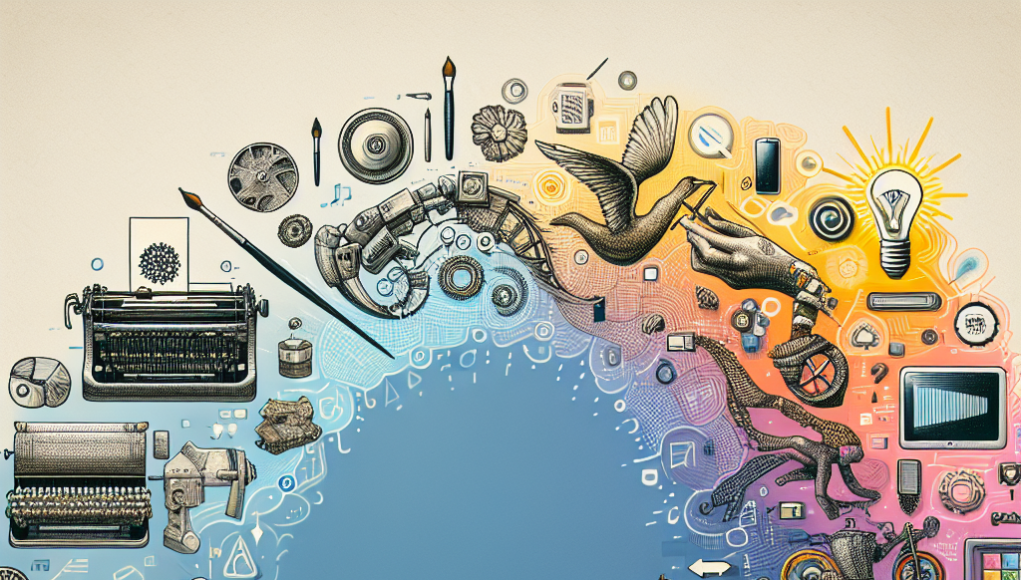Digital art, once a niche field, has burgeoned into a dynamic and influential component of the contemporary art scene. Its evolution mirrors the rapid technological advancements of the digital age, reshaping how art is created, perceived, and consumed. This article delves into the journey of digital art, examining its rise, the technological innovations that have shaped it, and its impact on modern creative industries.
The Rise and Transformation of Digital Art
Digital art’s emergence can be traced back to the 1960s when artists began experimenting with computers as tools for creation. Initially, these digital artworks were simple and often viewed as mere extensions of traditional art forms. However, as technology evolved, so did the capabilities and complexity of digital art, leading to its recognition as a legitimate and distinct art form. This transformation was marked by the increasing use of software and digital tools, enabling artists to explore new possibilities and push the boundaries of creativity.
The democratization of technology in the late 20th century played a pivotal role in the rise of digital art. As personal computers and graphic software became more accessible, a new generation of artists emerged, unencumbered by the limitations of traditional media. This accessibility allowed for a more diverse range of artistic expressions and fostered a vibrant online community where artists could share and collaborate on digital projects.
The internet has been instrumental in the proliferation of digital art, providing a platform for artists to showcase their work to a global audience. Online galleries, social media, and digital marketplaces have expanded the reach of digital artists, allowing them to connect with audiences and collectors worldwide. This global exposure has not only increased the visibility of digital art but also sparked discussions about its role and value in the broader art world.
Digital art has also undergone a significant transformation in terms of its aesthetic and thematic scope. Initially focused on abstract and experimental forms, digital art now encompasses a wide range of styles and subjects, from hyperrealistic digital paintings to interactive installations. This diversity reflects the versatility of digital tools and the artists’ ability to adapt and innovate within the digital realm.
The evolution of digital art has challenged conventional notions of authorship and ownership. The ease of reproduction and distribution has led to debates about intellectual property and the commodification of digital works. These discussions have prompted artists, collectors, and institutions to reconsider how digital art is valued and preserved, leading to new models for distribution and ownership.
As digital art continues to evolve, it is increasingly being integrated into traditional art institutions. Museums and galleries are recognizing the significance of digital art, dedicating exhibitions and collections to its exploration. This institutional acceptance marks a critical step in the ongoing transformation and legitimization of digital art as a vital part of the contemporary art landscape.
Technological Advancements Shaping Digital Art
The development of sophisticated software and hardware has been a driving force behind the evolution of digital art. Programs like Adobe Photoshop and Illustrator have become staples for digital artists, providing powerful tools for creating and manipulating images. These programs have continually evolved, incorporating features such as layers, filters, and 3D capabilities that offer artists unprecedented control over their work.
The advent of digital tablets and styluses has revolutionized the way artists interact with their digital canvases. Devices like the Wacom tablet and Apple’s iPad Pro, coupled with applications such as Procreate, have made digital drawing and painting more intuitive and natural. These tools mimic the tactile experience of traditional media while offering the flexibility and precision of digital technology.
Virtual reality (VR) and augmented reality (AR) have opened new dimensions for digital art, allowing artists to create immersive and interactive experiences. VR platforms enable artists to construct three-dimensional environments that viewers can explore, while AR applications overlay digital elements onto the physical world. These technologies have expanded the possibilities for storytelling and engagement, offering audiences a more participatory role in the art experience.
Artificial intelligence (AI) has emerged as a transformative force in digital art, enabling the creation of works that challenge human creativity. AI algorithms can generate art based on specific parameters or learn from existing artworks to produce novel compositions. This collaboration between human and machine raises intriguing questions about the nature of creativity and the role of the artist in the digital age.
Blockchain technology and non-fungible tokens (NFTs) have introduced a new paradigm for digital art ownership and distribution. NFTs provide a mechanism for verifying the authenticity and provenance of digital artworks, addressing concerns about reproduction and piracy. This technology has opened new avenues for artists to monetize their work and has sparked a surge of interest and investment in the digital art market.
The continuous evolution of technology ensures that digital art remains a dynamic and ever-changing field. As new tools and platforms emerge, artists are constantly exploring innovative ways to express their ideas and engage with audiences. This ongoing technological advancement promises to shape the future of digital art in ways that are as yet unforeseen.
Digital Art’s Influence on Modern Creative Industries
Digital art has significantly impacted the entertainment industry, particularly in film, animation, and video games. The ability to create detailed digital environments and characters has revolutionized visual storytelling, allowing for more immersive and visually stunning experiences. Digital artists play a crucial role in conceptualizing and executing the visual elements that define these media.
In the realm of advertising and marketing, digital art has become an essential tool for creating compelling and engaging content. Brands leverage digital art to craft visually striking campaigns that capture the attention of consumers. The flexibility of digital tools allows for rapid iteration and adaptation, enabling marketers to respond to trends and audience feedback in real-time.
The fashion industry has also embraced digital art, using it to design and visualize clothing and accessories. Digital tools enable designers to experiment with patterns, textures, and colors in a virtual space before committing to physical production. This capability not only streamlines the design process but also fosters innovation by allowing designers to push creative boundaries without the constraints of traditional methods.
Digital art has transformed the publishing industry, particularly in the realm of graphic novels and digital comics. Artists and writers can collaborate seamlessly across digital platforms, producing content that is both visually and narratively rich. The digital format allows for interactive elements, such as animations and sound, enhancing the reader’s experience and offering new storytelling possibilities.
The music industry has seen the influence of digital art in the creation of album covers, music videos, and stage designs. Digital artists collaborate with musicians to craft visual identities that complement and enhance the auditory experience. The integration of digital art in live performances, through projections and interactive installations, has redefined the concept of the concert experience.
As digital art continues to permeate various creative industries, it fosters cross-disciplinary collaborations and innovations. Artists, technologists, and creatives from different fields come together to explore new possibilities and redefine the boundaries of their respective disciplines. This synergy not only enriches the artistic landscape but also drives the evolution of creative industries as a whole.
Digital art stands at the intersection of technology and creativity, embodying the spirit of innovation that characterizes the modern era. Its evolution from a niche pursuit to a mainstream artistic expression reflects the transformative power of digital tools and platforms. As digital art continues to influence and reshape creative industries, it challenges artists and audiences to reconsider the possibilities of art in the digital age. The journey of digital art is far from over, promising new developments and opportunities for exploration in the years to come.










